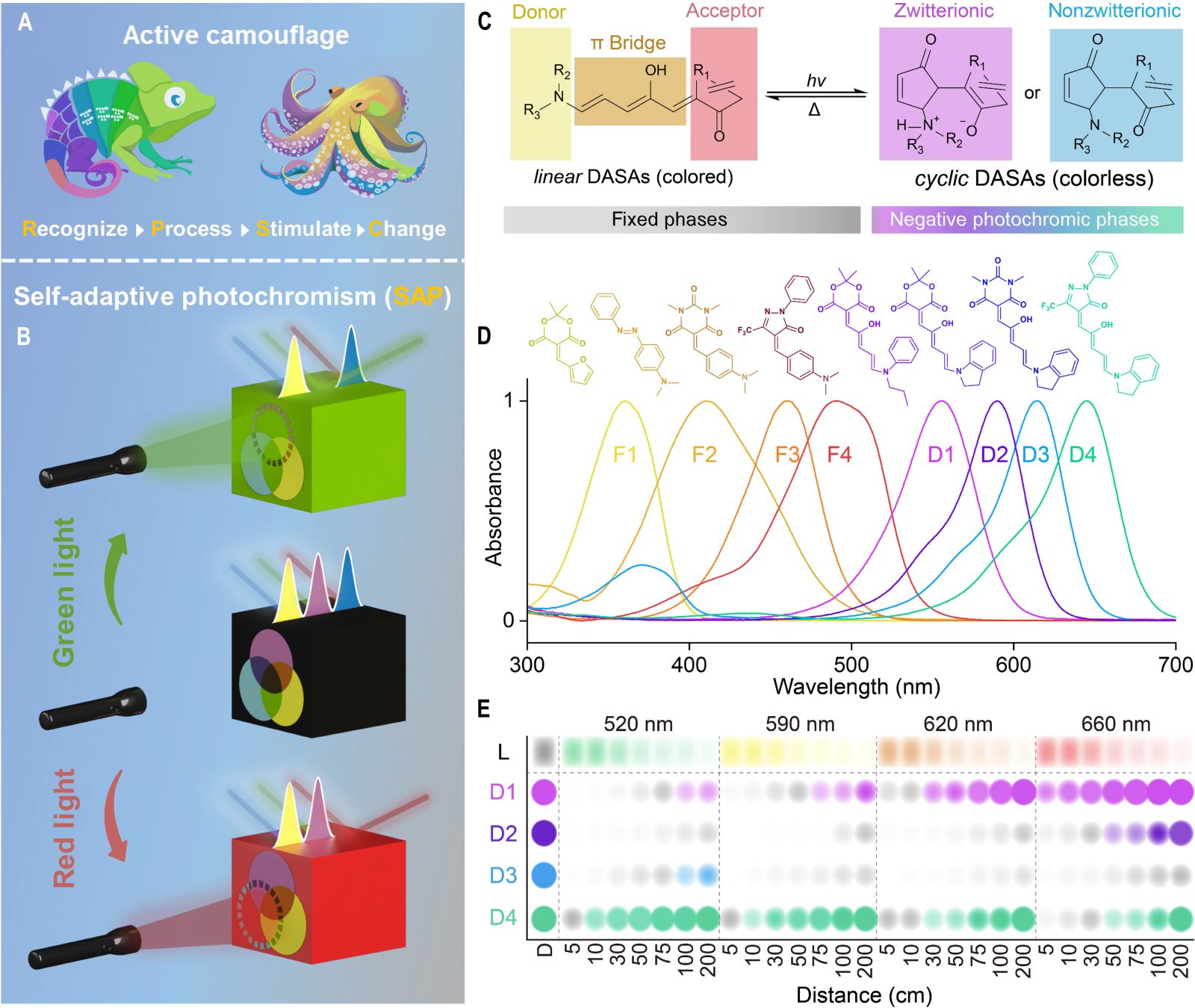This chameleon-inspired material could make invisibility real 🦎
Published by Cédric,
Article author: Cédric DEPOND
Source: Science Advances
Other Languages: FR, DE, ES, PT
Article author: Cédric DEPOND
Source: Science Advances
Other Languages: FR, DE, ES, PT
Follow us on Google News (click on ☆)
Self-Adaptive Photochromism (SAP) relies on molecules capable of reacting to ambient light. These molecules modify their structure to match the material's color to its surroundings without the need for complex electronic devices or external power sources.

(A) Creatures with active camouflage (created with Photoshop 2023).
(B) Schematic illustration of the self-adaptive photochromism (SAP) mechanism.
(C) General chemical structure and isomerization between linear and cyclic donor-acceptor Stenhouse adducts (DASAs).
(D) Normalized UV-visible absorption spectra of the dye units in fixed and negative photochromic phases [polycaprolactone (0.1 g/ml) in a tetrahydrofuran/dichloromethane mixture, 1:9 v/v].
(E) Relative color of the DASAs under light irradiation with different wavelengths and distances.
Unlike existing camouflage systems, which are often expensive and complicated, this material offers a simplified approach. In addition to reducing costs, its streamlined design opens up opportunities in various fields such as fashion, architecture, and military applications.
In laboratory tests, researchers placed a SAP solution in containers of different colors. The result: within less than a minute, the solution adapted, perfectly blending into its background. This behavior was also observed in natural environments, confirming its versatility.
Another significant innovation lies in the flexible coatings created from SAP. Applied to solid objects, these films enable rapid and effective camouflage, even under extreme temperatures ranging from -4 °F to 158 °F (-20 °C to 70 °C).
For now, blue and violet shades remain challenging for this material. However, researchers are exploring solutions to expand the range of available colors and further enhance the speed of color changes.
Beyond the visual effect, this material raises important questions. How can such technology be integrated into clothing or objects while avoiding potential misuse? Ethical and societal implications remain at the forefront of discussions.
Although promising, this material represents just the beginning. It heralds an era where environmental adaptation, once exclusive to the living world, becomes attainable through materials science.
What is self-adaptive photochromism (SAP)?
Self-adaptive photochromism (SAP) is a chemical phenomenon in which a material spontaneously changes color in response to variations in light. This process involves no electronic circuitry, making it unique.
The key lies in molecular reorganization. Under specific wavelengths, the material's molecules alter their chemical structure, resulting in a visible change.
These materials operate through molecular adducts, known as DASAs, associated with organic dyes. Together, they ensure a fast and autonomous response.
Robust and versatile, SAP is already being tested in applications such as smart coatings, textiles, and military camouflage.